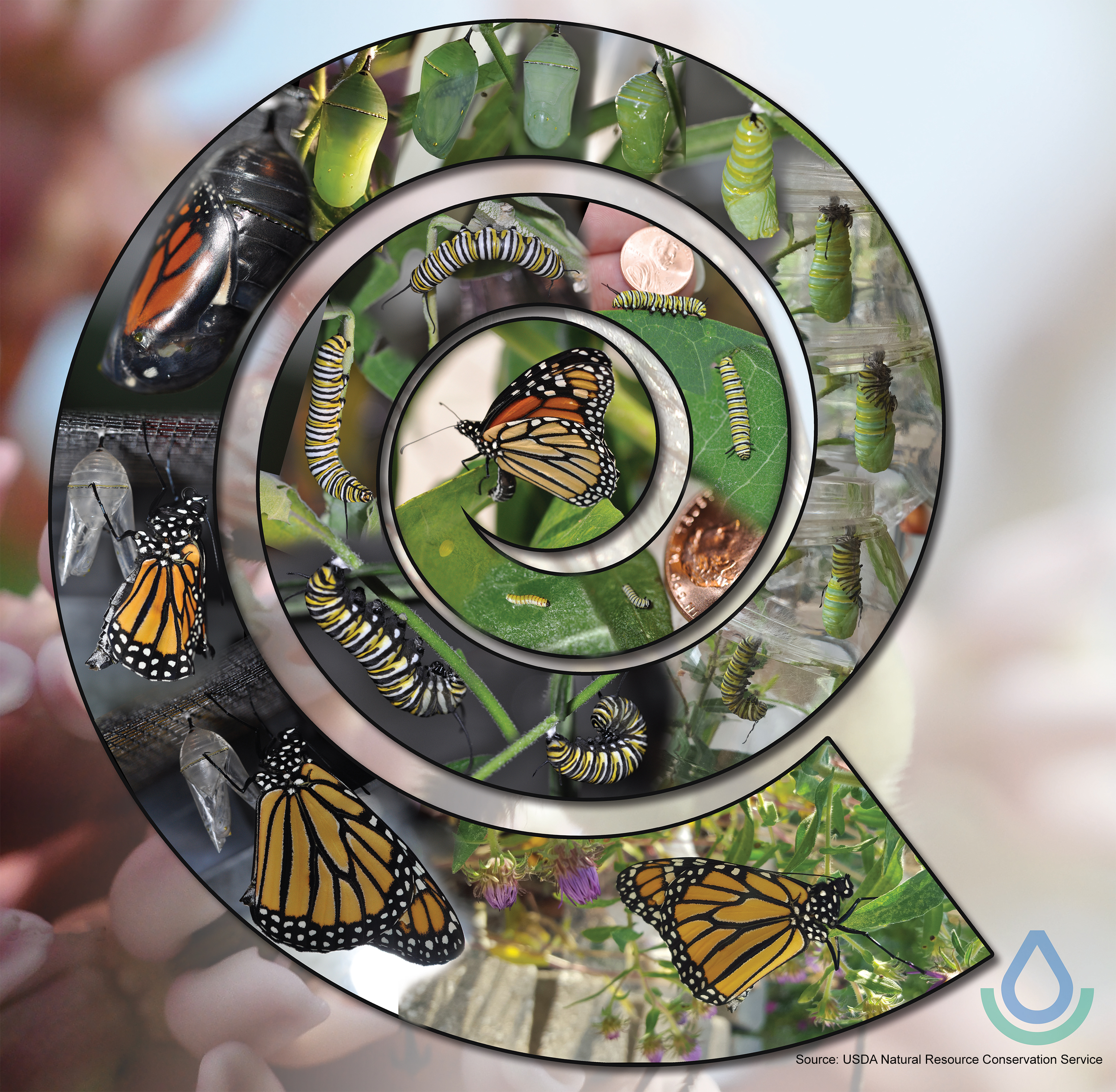Diversity in when milkweeds emerge supports monarch butterflies
The timing of milkweed emergence determines egg-laying opportunities for monarchs

Despite the cool rainy spring, people have generally reported seeing lots of migrating monarchs and the resulting eggs and caterpillars. In the East Lansing, Michigan, area, caterpillars from the earliest-laid eggs are already transforming into pupae, and a freshly-emerged adult monarch—i.e., very likely originating from eggs laid in Michigan—was observed on June 19. A promising start to the 2019 season!
This spring, we have again been impressed by the importance of the earliest-emerging stems of common milkweed for supporting egg laying by migrating monarchs. We first observed monarchs in East Lansing on May 16 and eggs on May 18. The important part about this observation is that relatively few common milkweed stems had even emerged by that time, suggesting that the early emerging milkweed is a key resource for the initial migrants into the state. This prompts us to ask, what are the factors that result in early emergence of milkweed and how can we ensure that some is likely to be present in any given year?
In our research we regularly survey common milkweed patches in the East Lansing area, often returning to the same spots year after year. While we know that common milkweed occurs at each of the sites, there is tremendous variability in when the stems emerge and thus become available for egg laying. This year when we first began scouting out patches in mid-May, common milkweed had emerged at very few of the sites. On June 3, we found milkweed at more than half of the sites, but some still had no stems above ground. Finally, on June 18 milkweed was up at most sites, but some of the places we know had milkweed last year still have no evidence of emergence. What is the implication of this variation in emergence timing for monarch egg laying and larval (caterpillar) survival?

Benefits of early emerging milkweeds
We gained additional insight when we surveyed 13 common milkweed patches in the East Lansing area on June 17 and 18. At 10 of these sites, we found virtually no monarch eggs or larvae—just five eggs and two early-instar larvae despite searching more than 1,200 stems. However, in three patches of milkweed, we found a glut of later-instar larvae that were approaching pupation. Across these three sites we found an average of one fourth or fifth-instar larva for every 15 stems, which is a very high density of monarch larvae, especially considering they were later-instar caterpillars.
What made these sites so attractive to the migrating adult monarchs a few weeks ago, and why did the larvae survive in such high numbers?
The common denominator at these caterpillar-filled sites seems to be relatively sparse vegetation with little plant litter on the soil, which we think stimulated the common milkweed stems at those sites to emerge early. This means the stems were available and likely were more visually obvious to the first migrating monarchs arriving in our area, and consequently they were loaded up with eggs. The individual factors that resulted in the sparse vegetation varied. One site was a sandy grassland in an industrial park, another a recently harvested poplar planting on a sandy, West-facing hill, and the third was a sparsely-vegetated grassy parking lot edge. We have also observed that around the home landscape, milkweed growing in elevated beds or on warmer South-facing slopes seem to emerge early. Areas that have been burned (removing plant litter) also warm up quickly and support early emerging milkweed.
Benefits of later emerging milkweed
Having spent most of this article talking about the importance of early emerging milkweed, we also need to mention the benefits of late emerging milkweed. The first generation butterflies that will be flying over the next several weeks prefer young milkweed on which to lay their eggs. Some of those eggs will be laid on butterfly milkweed, swamp milkweed, and whorled milkweed, which naturally emerge later than common milkweed. Alternatively, we previously discussed how setting back a portion of a common milkweed patch by mowing can enhance egg and larval survival.
In the past, there was probably a wide diversity of milkweed emergence dates due to natural disturbances like fire, grazing, as well as variable soil types and slopes. Later, humans introduced variability through agricultural practices associated with preparing and cultivating crop fields. Currently, we have lost some of that variability and may need to replicate it more intentional ways.
How to increase variable times of emergence in a milkweed stand
Given this, it’s worth considering how we might increase variability in milkweed emergence throughout the critical spring and early summer season. Perhaps that means finding a low-productivity sandy spot on your property on which to plant milkweed. Milkweed in mulched garden beds near structures also seems to emerge early and may provide critical resources. Plant or encourage some late emerging species of milkweeds. Finally, consider how you might mow or trim common milkweed to provide timely resources for monarch butterflies.



 Print
Print Email
Email